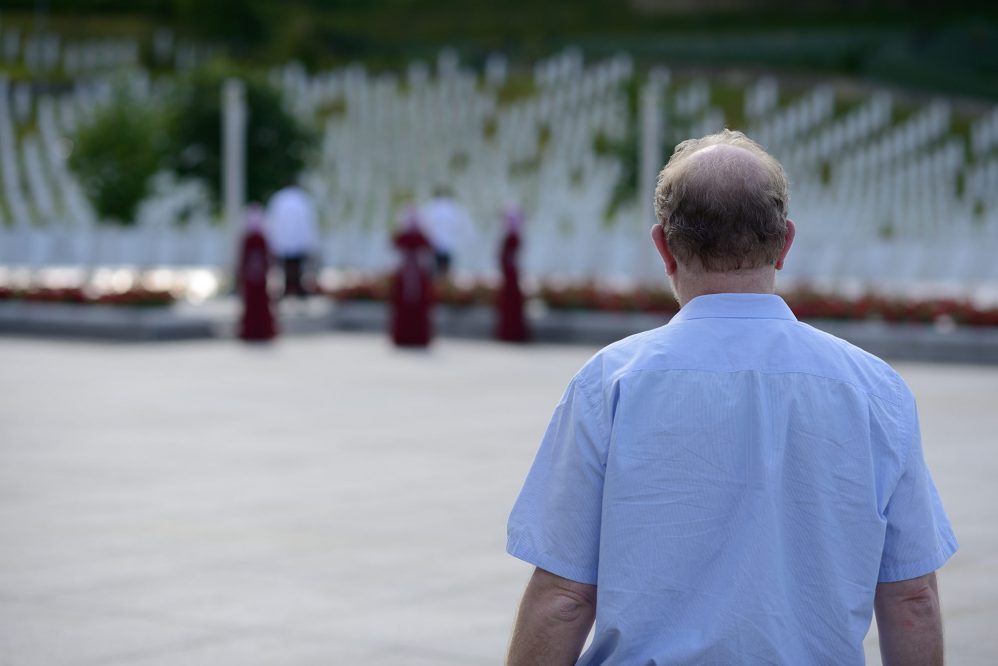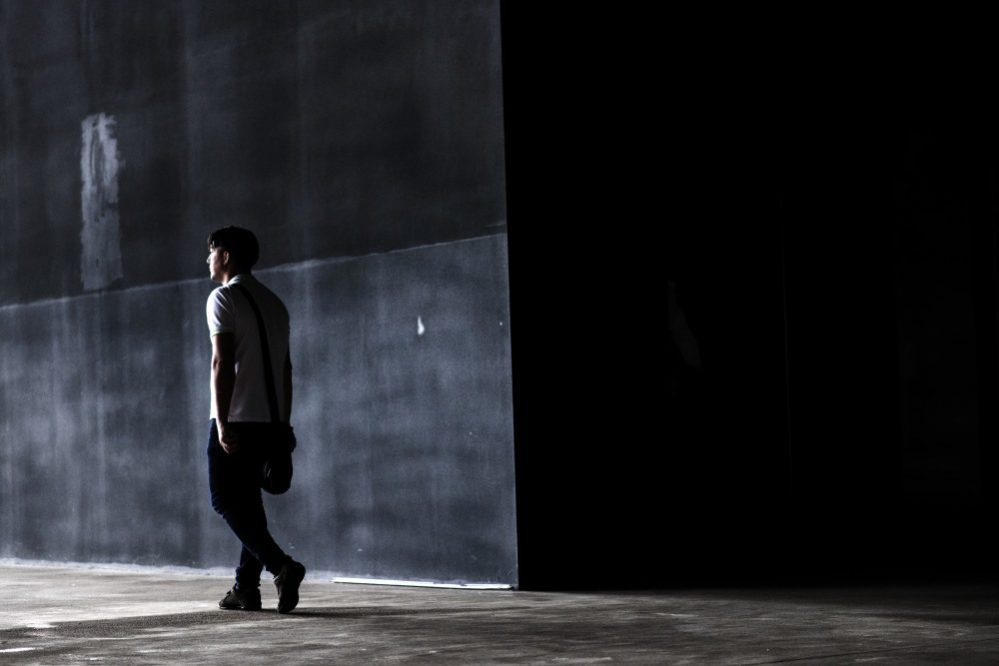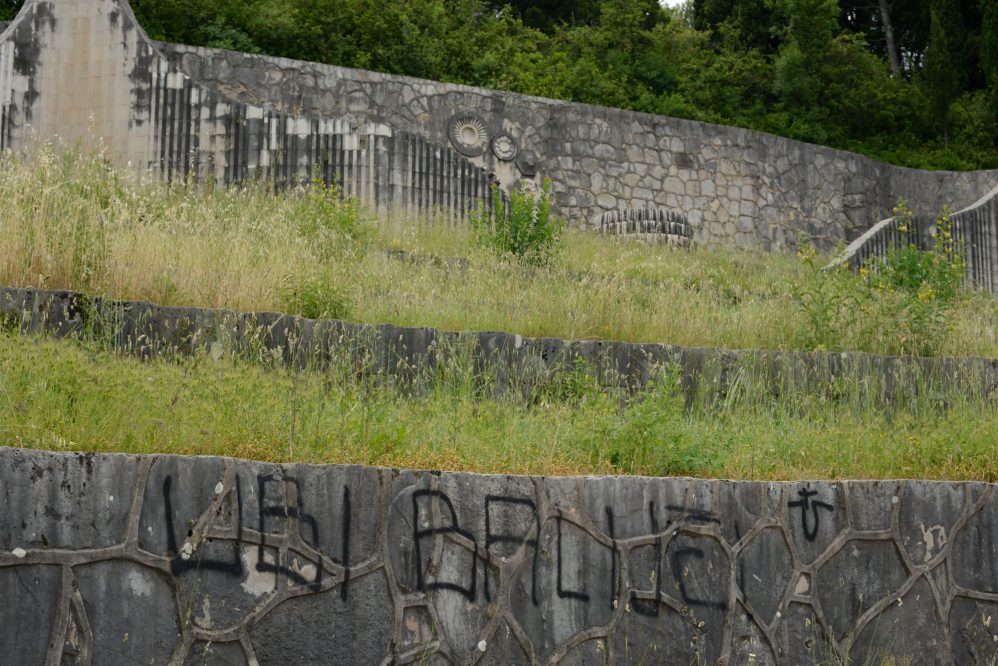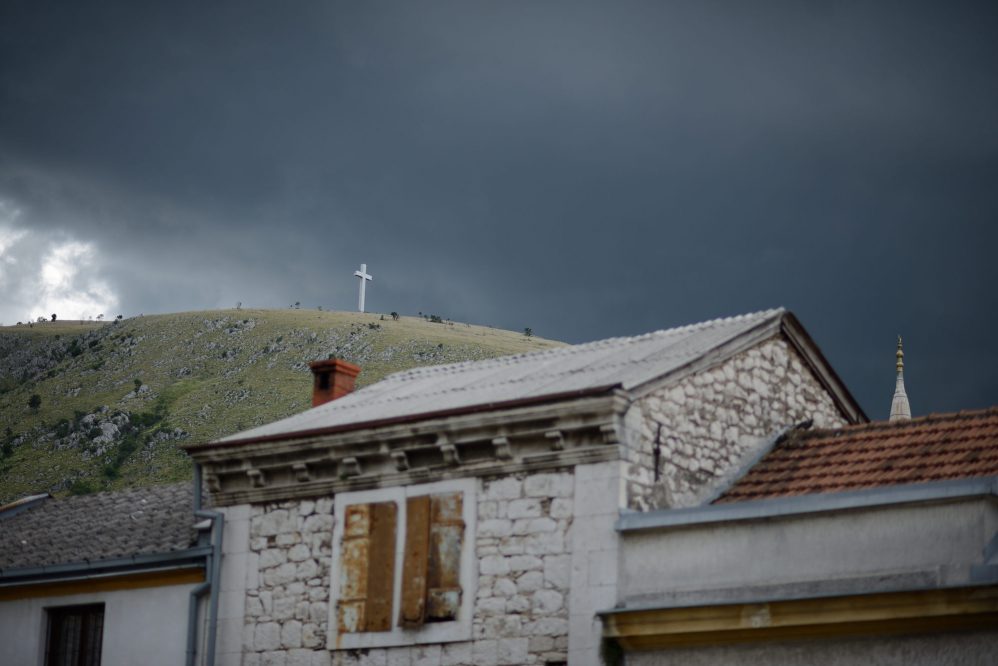In cooperation with the German Bundesstiftung Aufarbeitung[1], we organised a study trip (29.5. – 5.6. 2016) for a group of people from Germany involved in the theory and practice of memory work. Apart from historians, the group also included former members of parliament, ministers and reporters, as well as the four of us from CNA.
The purpose of the study trip was to gain insight into the various approaches to dealing with the past or pasts in the societies and states of the Dayton triangle. Our guests were interested in the official memory and memorialisation policies, they wanted to see what it is we remember in public discourse and public spaces, how memory is shaped in inscribed in our social reality. The benefit of this study trip for us from CNA was the opportunity to see a mirror image, a mirror held up to all the aspects of our societies and to see them from a different perspective.

Given the intertwining of the past and the present in the former Yugoslavia and their mutual conditioning, during the study trip, we visited not just sites important for understanding the recent past, but also those from the time of the Second World War. We started the trip in Belgrade and in the subsequent seven days we visited Vukovar, Srebrenica, Sarajevo and Mostar, where we met with many people whose work is directly or indirectly linked to the past, be they historians or practicioners working on issues related to dealing with the past.

In our work, dealing with the past has imposed itself as a basic precondition for peacebuilding. What we are trying to achieve with our work is to make dealing with the past constructive, inclusive and with multiperspectivity, given that it can fulfil its purpose only as such. This is why cross-border cooperation is another precondition of this process. Our post-war day-to-day life, however, is based on different principles, which is why throughout the study trip, wherever we went, we saw the dominant presence of a single – national and usually exclusive perspective of both the more recent history and the focal points it usurps from socialist history or the history of the Second World War.
When we visited memorial sites significant for the national narratives of our countries, we could see how the memory formed through wartime hostilities is becoming increasingly established, becoming a concrete “official” version of the past that leaves no room for nuances that were, until fairly recently, still discernible. We would probably not have had an opportunity to hear the condensed version of these narratives if we had not been in a group of foreigners, Germans, for the benefit of whose “easier understanding” all the complexity of the 1991-1999 wars was served up in a simplified version of epic-heroic myths the likes of which had once been a common feature of narratives about the people’s liberation struggle. This, of course, is nothing new. However, because we were accompanying people whose personal and social history was marked by the DDR communist dictatorship, the numerous questions that our group asked us and the people we met enabled us to re-establish that parallel and remind ourselves of the root of our problems – authoritarian regimes, militarisation and the patriarchy. That basic premise remains the same to this day.
The study trip included visits to:
Belgrade – city centre marked by the traces of the 1999 NATO bombing, places where demonstrations that lead to the fall of the Milošević regime were held, the Bajrakli mosque which was attacked and set fire to in 2004 as an act of retribution for similarly savage acts in Kosovo, but also the Staro sajmište (Old Fairground) which was the site of a concentration camp during the Second World War.
Vukovar – “Place of Memory – Vukovar Hospital 1991”, the Homeland War Memorial Centre, the Ovčara Memorial Centre and monument.
Srebrenica – Memorial Centre Srebrenica – Potočari, Memorial and cemetery for victims of the 1995 genocide
Sarajevo – Young Bosnia Museum – Princip’s Bridge, Vase Miskina-Ferhadija (site of the bread queue massacre), Eternal Flame, Monument to the children killed in the siege of Sarajevo, Monument to the International Community, Monument to Victims of the Cold War and Other Wars, the Sarajevo War Tunnel.
During our visit to Sarajevo, we held a workshop on dealing with the past with war-veterans from all three sides from the war. We also visited the Research and Documentation Centre and the Historical Institute where we were hosted by BiH historians working on contemporary Bosnian-Herzegovinian and Yugoslav socialist history. We were also received at the OSCE Mission[2] in BiH which has been present in BiH since 1995 and they presented the results of their work.
On our way to Mostar, we visited the Museum “Battle for the Wounded at Neretva” in Jablanica and we started our visit of Mostar, with the non-discreet escort of three police officers, at the Partisan Cemetery – a memorial cemetery designed by Bogdan Bogdanović. We continued on to the western part of the city and visited the Bruce Lee monument (the image of an imaginary champion of justice embodies the demand for universal justice), and the former front lines, which are today the lines of demarcation – the Boulevard and the destroyed ARBiH monument. We visited the Old Town and the Old Bridge and we ended our visit in Šehitluci. During our time in Mostar, we visited the Centre for Peace and Inter-ethnic Cooperation (although we had a scheduled meeting, the Director of the Centre, Mr Safet Oručević, was absent), and the Croat Documentation Centre of the Homeland War in BiH. The latter Centre has a Department for the Second World War and postwar period and the Homeland War tasked with constructing the memory policy for the 1941-1995 time period. They presented their project of constructing the “Peace Cemetery” as the burial place for members of formations that the Croat Documentation Centre calls the “Croat Army” (these are mostly members of the Ustasha movement who died or were killed during the Second World War in the territory of Herzegovina), as well as other victims of the “Yugo-communists”.

With each day of the study trip in this rather unique memorial context, the participants were increasingly apprehensive about the potential for renewed hostilities in the region. This opinion was certainly reinforced by the “entrenchment” of narratives that we saw throughout our trip as a feature of all memorial sites wherever they may be located. This type of memory and exclusive self-victimisation that it imposes thus become obstacles to lasting peace.
Nothing we saw was new to us, and there was no stark contracts compared to our earlier visits to these places. However, what is worrying is the increasing lack of reflection and examination of truths that are “served up” at these places, supported by the fact that the “others” do not visit these sites. It is disheartening that no one is considering this possibility, or the need to open up about our wounds to each other, the exclusivity of our own pain makes us blind to the suffering of others.
Allow me, therefore, to conclude with a story told to us at the end of the presentation of the “Peace Cemetery” project at the Croat Documentation Centre by Mr Rainer Eppelmann, paraphrasing Bertolt Brecht and inviting our hosts to dialogue and the need for cooperation with others:
Great Carthage fought three wars. After the first it was still powerful. After the second it was still inhabitable. After the third, it could no longer be found.
Bertolt Brecht, Open letter to German artists and writers, 1951
[1]Federal Foundation for the Study of the Communist Dictatorship
[2] Organization for Security and Co-operation